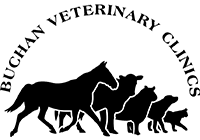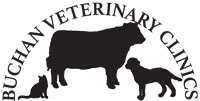A vetting/pre-purchase examination should be viewed as a detailed survey of a horse to assess its suitability for purchase. We strongly recommend that in a pre-purchase situation a full five stage vetting is carried out by an experienced veterinary surgeon to give you a comprehensive and detailed evaluation of the horse’s suitability for purpose.
What to do before the vetting:
- Be very clear about the intended use of the horse and future expectations.
- Look up any relevant competition records – if there are unexplained gaps or performance issues discuss these with your trainer or veterinary surgeon.
- Request a clinical history is sent to the veterinary surgeon performing the examination.
- Ensure there are adequate facilities to perform a thorough examination: a stable, trot up area, area to trot a circle on a firm surface exercise area and gallop area (where applicable).
- Seek advice from your insurance company regarding the need for X-rays and the views required.
There are two categories of vettings:
Two stage or mortality insurance veterinary examination
- An examination limited to assessing the health and wellbeing of the horse; the heart, eyes, respiratory system and limbs when the horse is at rest.
- Followed by trotting the horse up in a straight line on a level surface to assess the action.
- This examination does NOT involve flexion tests, ridden exercise, trotting a horse on a circle to evaluate the action, nor examining the horse at exercise – we do not recommend this as a pre-purchase option.
Five stage pre-purchase veterinary examination
- A comprehensive examination of the horse to assess its suitability for purchase for a specific purpose.
- Comprising of a preliminary examination of heart, eyes and respiratory system, walk and trot in hand and flexion tests on all four limbs, where appropriate.
- Followed by an exercise phase; trotting the horse on a circle on both a firm and soft surface, controlled ridden exercise at all paces and a period of strenuous exercise to elevate the heart rate and assess the ‘wind’. Strenuous exercise is followed by a 30 minute rest period in the box. The rest period is followed by a second trot up to ensure that exercise has not resulted in any lameness issues.
- A blood sample would be taken to detect substances present in the horses system at the time of the examination, which may have masked any factor affecting the horse’s suitability for its intended work. This is stored by the Veterinary Defence Society (VDS).
- We strongly advise taking a routine blood sample to assess the overall fitness and health of the horse.
- Once the examination has been completed, the markings and microchip as well as passport numbers will be recorded. All significant signs of disease, injury or physical abnormality including conformational defects will be recorded on the certificate complete with an opinion regarding the suitability for purchase.
Additional options
Additional examinations may be required or advised at the time of the examination based on either insurance requirements or clinical findings. Radiographs, supplementary blood tests (eg for strangles, export or breeding mares) and endoscopy will only be undertaken at the request of the purchaser and the results will be recorded on the certificate.
What to do after the vetting
- Ensure you understand the certificate and any risks highlighted. Discuss all issues with the veterinary surgeon.
- If insurance is applicable, send the certificate to the insurance company BEFORE completing the purchase – in case of exclusions being placed on the policy.
Please contact our Strichen practice to discuss your requirements on 01771 637219.


